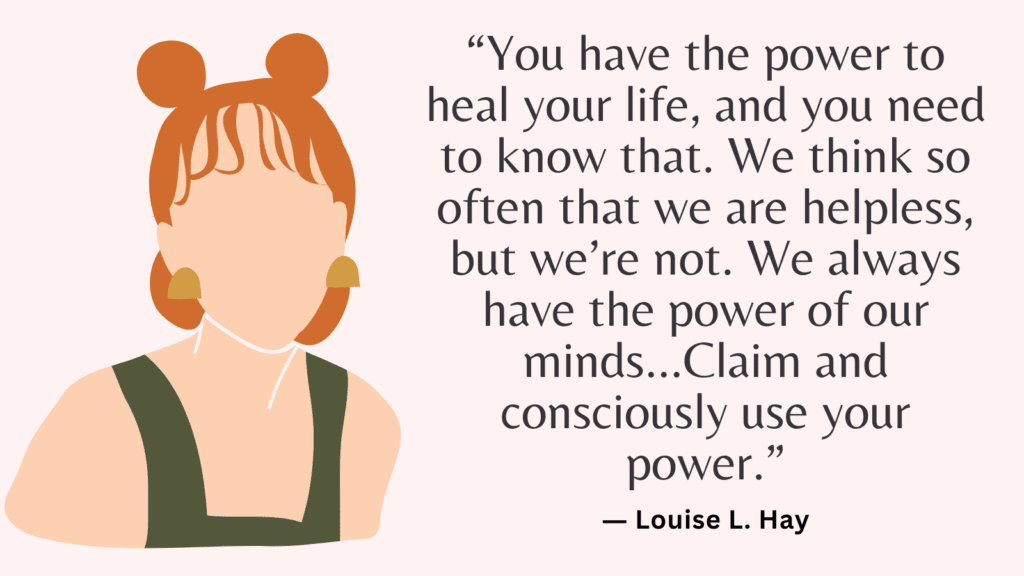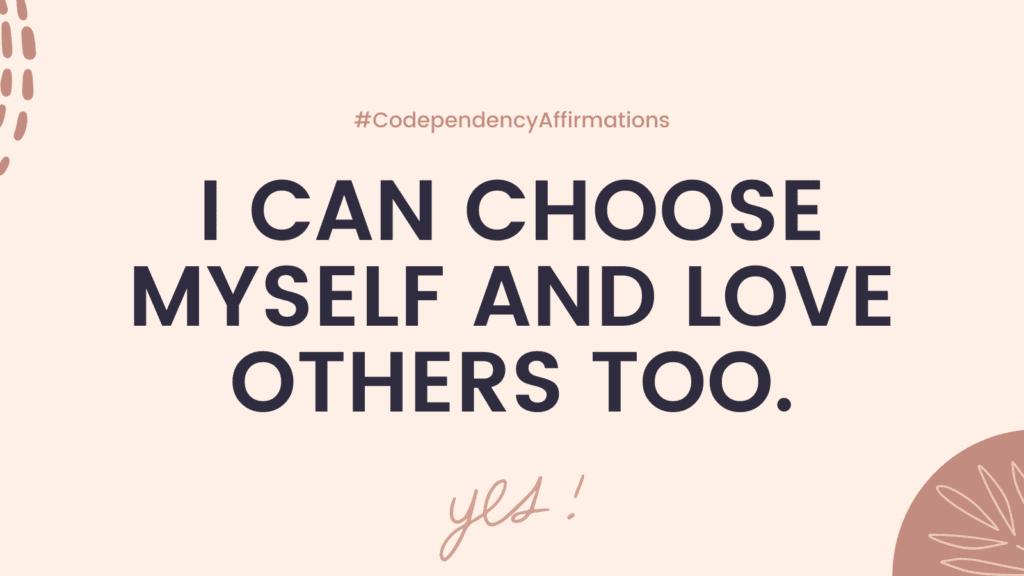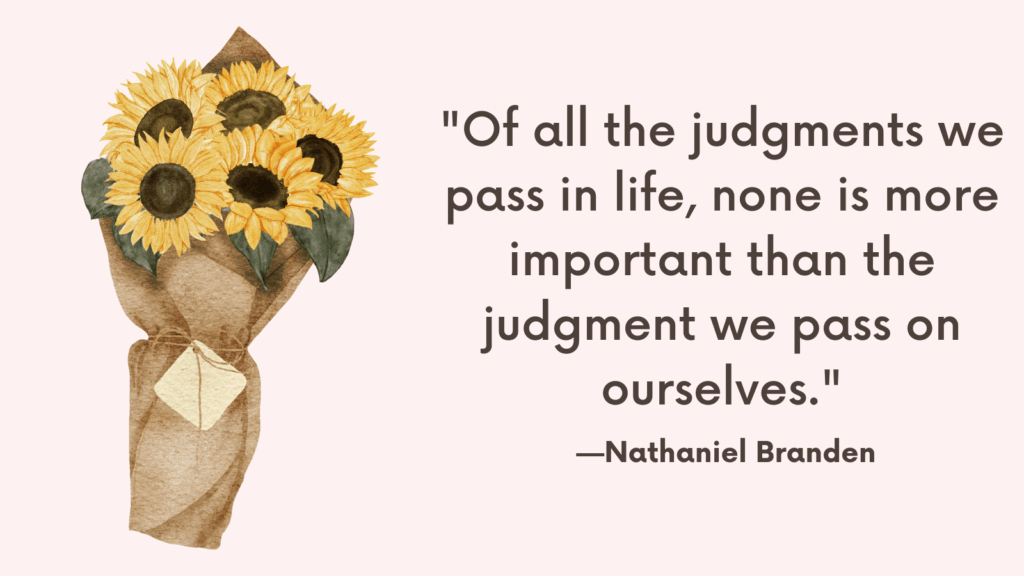In this post you’ll learn about the difference between codependency and healthy love.
What Is Codependency?
Codependency is a pattern of behavior in which individuals prioritize the needs and desires of others over their own.
It often involves an unhealthy and disproportionate reliance on another person, particularly one who may have an addiction or a mental health issue.
Codependent individuals may feel anxious or guilty when they don’t cater to the needs of others, even to their own detriment.
They may also struggle with setting boundaries, communicating their needs clearly, and making decisions for themselves.
Codependency can be damaging to individuals and their relationships, as it can lead to feelings of resentment, burnout, and low self-esteem.
Common signs of codependency may include:
- Difficulty setting boundaries
- Obsessive need to please others
- Neglecting personal needs and desires
- Fear of abandonment or rejection
- Dependence on others for validation
- Feeling responsible for others’ emotions or behaviors
- Tendency to attract or seek out relationships with individuals who are emotionally needy or unstable
- Difficulty making decisions without seeking validation from others
- Chronic feelings of guilt or inadequacy
- Enabling behaviors such as covering up for others, making excuses for their behavior, or taking on their responsibilities.
Note that everyone may display some of these behaviors from time to time, but a pattern of these behaviors may indicate codependency.
Related: How To Overcome High Functioning Codependency?
What Is Love?
Love is a positive and supportive bond between two individuals.
It involves mutual respect, trust, honesty, communication, and understanding.
Healthy love is not controlling, manipulative, or abusive in any way.
Both partners feel comfortable being themselves around each other and are able to express their feelings and needs openly without fear of judgment or repercussions.
They support each other’s personal growth and goals, while also working together as a team towards common goals.
Here are some healthy indications of love:
- Your love gives you new strength and fills you with creative energy.
- You respect each other.
- You like each other and accept each other’s shortcomings.
- You know each other well.
- You feel pleasure while in the company of each other.
- Your love dynamic is progressively maturing.
Related: Codependent Relationship Quiz (+FREE Codependency Worksheets)
Codependency vs. Love
Codependency and love can be easily confused, but they are quite different.
Codependency is an unhealthy and dysfunctional form of attachment where one person puts the needs of another person before their own, to the extent that their own well-being is neglected.
The codependent individual tends to enable and fix the problems of the other person, which can lead to a cycle of dependency.
Love, on the other hand, is a healthy and mutually beneficial form of attachment where both individuals care for and support each other in a balanced way.
Love involves respecting each other’s autonomy, allowing for independence, and supporting growth and self-improvement.
It does not involve sacrificing one’s own well-being or enabling unhealthy behaviors. In short, love is about mutual respect, trust, and growth, while codependency is about an imbalanced and often unhealthy attachment.
In short, healthy love is a balanced and respectful partnership, while codependency can be a harmful dynamic that undermines individual autonomy and leads to unequal relationships.
Related: Top 8 Tips On How To Break Codependency In A Relationship
FREE Codependency Worksheets PDF
How to Move From Codependency to Real Love?
Codependency is a complex issue, but here are some steps you can take to begin overcoming it:
#1. Practice Mindfulness
Mindfulness is the practice of paying attention to the present moment with an open, non-judgmental and accepting attitude.
It involves being fully aware of your thoughts, emotions, bodily sensations, and surroundings without getting caught up in them or reacting immediately.
How mindfulness helps you overcome codependency?
Codependency often involves an unhealthy attachment to other people and a tendency to prioritize their needs and desires over our own.
Through mindfulness practices, such as meditation and self-reflection, we can learn to recognize these patterns of behavior and become more aware of our own thoughts and emotions.
By becoming more mindful, we can also learn to develop healthy boundaries and prioritize our own needs and well-being.
This can involve learning to say “no” to requests or situations that are not in our best interest, and prioritizing self-care activities such as exercise, rest, and relaxation.
Additionally, mindfulness can help us develop greater self-compassion and reduce feelings of shame or guilt that may be contributing to codependent behaviors.
Related: Best 6 Mindfulness Exercises For Beginners (+FREE Resources)
Mindfulness Exercise
Here are some steps you can take to practice mindfulness:
1. Set aside some time each day to be mindful. This can be as little as five or ten minutes, or as much as an hour.
2. Find a quiet space where you can sit comfortably. Place your feet firmly on the ground and close your eyes.
3. Begin by taking a few deep breaths, paying attention to the sensation of the air moving in and out of your body.
4. As you continue to breathe deeply, notice any thoughts or feelings that come up. Try not to judge or analyze them; simply observe them.
5. If you find yourself getting caught up in your thoughts, gently bring your attention back to your breath.
6. Continue to focus on your breathing, allowing any thoughts or feelings to pass through your awareness without dwelling on them.
7. When you feel ready, slowly open your eyes and take a moment to ground yourself in the present moment.
Remember that practicing mindfulness takes time and patience.
Be gentle with yourself, and don’t worry if your mind wanders or if you find it difficult to stay focused at first.
With regular practice, you may find that mindfulness helps you to become more aware of your codependent tendencies and to develop healthier relationship patterns.
Related: Best 8 Mindfulness Exercises For Adults That Will Help You Regulate Your Emotions
#2. Get To Know Your Own True Needs
Take some time to reflect on your life and your goals.
Ask yourself what you truly want in life and what makes you happy.
If you don’t know where to start, try out new things that align with your values and what you believe will make you happy.
This can help you gain insight into what truly satisfies you.
Remember that getting to know your own true needs is an ongoing process.
As you grow and evolve, your needs may change too. So it’s important to be open to exploring and adapting to new experiences and opportunities.
#3. Express And Assert Yourself
Take some time to reflect on your needs and wants throughout the day.
It could be something as simple as needing alone time, or wanting to pursue a passion. Acknowledge them and write them down.
Once you’ve identified your needs, it’s important to communicate them clearly and directly to those around you.
Use “I” statements to express how you feel and what you need. For example, “I need some time to myself right now” or “I would appreciate it if we could talk about this calmly.”
Related: Self-Abandonment: What Is It & How To Get Back In Touch With Yourself
#4. Set Healthy Emotional Boundaries
Setting boundaries is an important step in overcoming codependency because it empowers you to take care of yourself and prioritize your own emotional, mental and physical well-being.
When you set healthy boundaries, you are able to communicate your needs and limits clearly to others, and you also learn to say “no” when someone tries to push beyond these boundaries.
This helps because often times codependent individuals tend to prioritize the needs of others above their own and have difficulty asserting themselves when their own mental or emotional health is at risk. This can lead to feelings of resentment, burnout and exhaustion.
By setting boundaries, you begin to develop a healthier relationship with yourself and with others.
The following are some tips to help you set healthy boundaries:
1. Identify your feelings: Start by becoming aware of how you feel in different situations and around certain people. Ask yourself what triggers negative emotions or anxiety, and how you can manage those feelings.
2. Clearly define your needs: Take time to figure out what your own emotional needs are, and be able to articulate them to others. This can help you avoid feeling resentful or unheard.
3. Practice saying no: It’s okay to say no to requests or invitations that make you uncomfortable or overextend yourself. Setting boundaries means recognizing your limits and prioritizing your own well-being.
4. Communicate assertively: When setting boundaries, it’s important to communicate in a way that is clear, direct, and respectful. Avoid blaming or shaming language, and focus on your own needs and priorities.
5. Be consistent: It’s important to maintain the boundaries you’ve set consistently over time. This can help build trust and respect in your relationships while also protecting your own emotional health.
Remember, setting emotional boundaries takes practice and can be difficult at first. But be patient with yourself, and keep prioritizing your own well-being.
Related: Top 25 Tips On How To Set Boundaries In A Toxic Relationship? (+FREE Worksheets PDF)

#5. Identify and Challenge Your Limiting Beliefs
By identifying your limiting beliefs, you can become more aware of how they are affecting your behavior and interactions with others.
As you challenge and replace your limiting beliefs with more positive and empowering ones, you can improve your self-esteem and sense of self-worth.
Some common negative beliefs related to codependency may include:
- It’s my responsibility to fix other people’s problems.
- I can’t say no to others because I don’t want to disappoint them.
- If I take care of others, they will love and appreciate me more.
- I can’t be happy unless everyone around me is happy.
- I have to ignore my own needs in order to take care of others.
- I am not deserving of love and respect unless I am doing something for someone else.
- It’s selfish to put myself first.
- Other people’s opinions and feelings are more important than my own.
- I can’t trust others to take care of themselves without my help.
- If someone doesn’t need my help, then I have no value or purpose.
Use the following prompts to challenge those beliefs:
- What evidence do you have that supports this negative belief?
- Is this belief consistent with reality?
- Is this belief helpful or harmful to your well-being?
- Have you tried considering alternative perspectives on the situation?
- Have you had any successes or positive experiences that contradict this belief?
- Are there any patterns or biases in your thinking that may be contributing to this negative belief?
- What would a trusted and supportive friend say about this belief?
- What would you tell a loved one if they held this negative belief about themselves?
- How would your life be different if you did not hold this negative belief?
- What steps can you take to challenge or change this negative belief?
Related: What Causes Cognitive Distortions? (+Top 10 Common Cognitive Distortions & How To Challenge Them)
#6. Nurture Your Own Self-Love
Codependency often arises from a lack of self-love and low self-esteem.
When someone doesn’t have love and respect for themselves, they tend to seek validation and fulfillment from others, leading to unhealthy relationships and a sense of dependency.
To overcome codependency, it’s crucial to develop self-love and self-compassion.
Self-love can also help you cultivate a greater sense of independence and become more self-reliant, which is instrumental in breaking unhealthy patterns of dependence in relationships.
Practicing self-love may involve various activities like therapy, journaling, meditation, mindfulness practices, positive affirmations, and self-care routines, among others.
These activities can help you learn to accept and appreciate yourself, nurture yourself, and build a healthy relationship with yourself.
Related: How To Start A Self Love Journey? Top 10 Powerful Ways to Love Yourself More
#7. Work On Improve Your Self Esteem
Codependency often stems from a lack of self-esteem, where individuals feel that their worth is tied up in the approval and acceptance of others.
When someone has high self-esteem, they have a greater sense of self-worth and are less likely to seek validation and approval from others.
Self-esteem can also help individuals recognize when they are engaging in codependent behaviors, allowing them to take steps to change those behaviors and create healthy relationships.
The following are some helpful tips to increase your self-esteem:
1. Do more of what makes you feel good: This can be anything that makes you feel good and cared for. It could be taking a warm bath, getting a massage, going for a walk in nature, or cooking yourself a healthy meal.
2. Be kind to yourself: Avoid negative self-talk and criticism, and instead practice self-compassion. Treat yourself with the same kindness, caring, and understanding that you would offer to a close friend.
3. Celebrate your achievements: Take the time to acknowledge and celebrate your accomplishments, no matter how small they may seem. Recognizing your successes will help you feel proud of yourself and boost your self-esteem.
4. Surround yourself with positive people: Spend time with people who uplift and support you, and avoid those who bring you down or make you feel bad about yourself.
Related: Low Self Esteem Quiz

#8. Work With A Therapist
Codependency is often rooted in childhood experiences and relationship patterns, and a therapist can help you identify and address those underlying issues.
In therapy, you can also learn healthy boundaries, communication skills, and self-care practices.
Your therapist can provide support and guidance as you work through challenging emotions and patterns of behavior.
Remember that healing takes time and patience, but with a committed effort, you can overcome codependency and cultivate more fulfilling relationships.
Conclusion
Healing from codependency is a process and requires patience and dedication.
Codependency is a pattern of unhealthy, often one-sided relationships in which one person is excessively reliant on another person for their emotional and/or physical well-being.
On the other hand, healthy love is based on mutual respect, trust, and honesty.
Both partners in a healthy relationship are able to maintain their own sense of self and independence, while also supporting and caring for each other.
There is a mutual give-and-take, with both partners putting in effort to make the relationship work.




